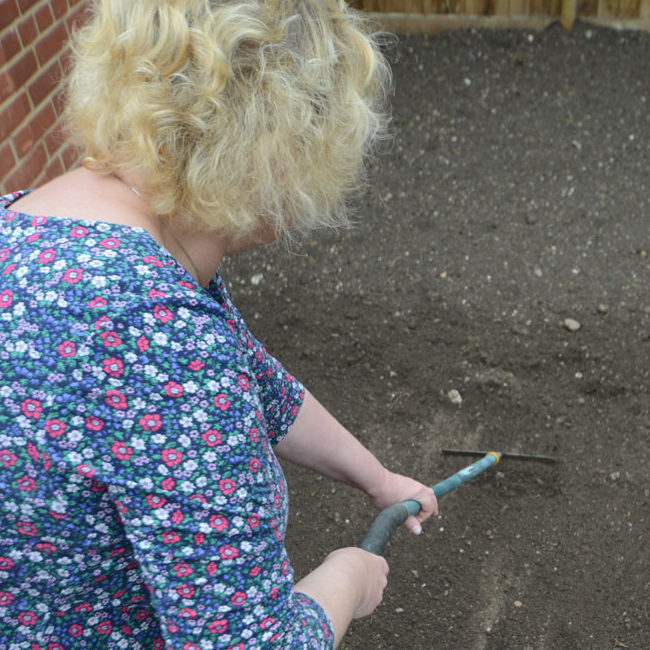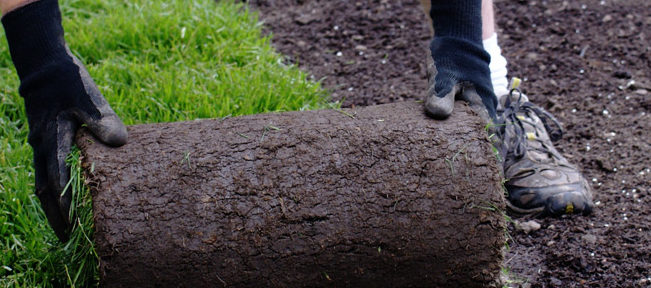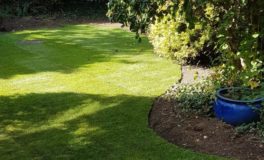It sounds like a time-saving solution in theory, but should you really lay new turf on top of an old lawn? We would advise against it – here’s why.
To answer a question with another question – why on earth would you want to lay lovely new turf on top of an old lawn? The temptation to save yourself the work of lifting an old lawn, disposing of the grass and then preparing the soil for new turf is understandable. It’s similar to placing new wallpaper on top of old in your house. Yes, you can temporarily disguise bald patches in your lawn by laying new turf over old grass and the new turf will probably root into it in the short term. But the effect will not last – your new lawn will soon look like your old one and you will have wasted your money!
In this article, we explain in detail detail why and how this happens.
5 Reasons not to lay new turf on top of an old lawn
-
- Soil compaction – new turf needs freshly prepared soil for the roots to grow well
- Disease – any disease could affect the new turf
- Pests – existing pests in the soil may attack new turf
- Weeds – pernicious weeds need to be destroyed or they will push through new turf
- Humps and hollows – proper soil preparation gives you a level lawn that is easy to grow
Let’s look at some of these in more detail.
Why won’t new turf survive over old grass?
For turf to survive, it has to be able to form a root system. For this to happen, your turf needs to have contact with the soil beneath it. If you lay new turf over old grass, there will be a layer between your turf and the soil beneath and the existing grass makes it hard for the new turf to get the nutrients it needs to survive.
Your old lawn looks tired for a reason
If you are seriously thinking of re-turfing your lawn, there must be a reason behind it. Usually, the reason is that the old lawn is worn out, has lumps and bumps on the surface, is pale and blotchy, perhaps mossy or weedy and just not nice.
All of those problems have an underlying cause. That cause lies in the soil beneath the lawn and/or in the grass species that are trying to grow there. If you lay turf on top of it, you’re only hiding that problem, not addressing it.
To use the wallpaper analogy once more, if your old wallpaper is damp or lifting off the wall, sticking more paper on top of it won’t cure that problem. The wall will still be damp and the new paper will soon start to bubble and lift along with the old stuff, creating a waste of time and money.
Find the perfect turf for you here.
Why soil preparation is important
By lifting all of the old vegetation off your lawn you’ll be taking away weeds, grass and plants that aren’t suited to the conditions, as well as diseased grass and possibly a good few pests too.
Pests such as leather jackets and chafer grubs live just below the surface of the soil and eat the roots of your grass. If these are the cause of your lawn’s demise, it will be better to find them and treat them effectively.
The next step in soil preparation is to dig or rotavate the soil. This fluffs it up and sorts out problems caused by compaction. If the soil is poor, you can improve it at this stage. Raking gets rid of large stones which can cause discolouration in a lawn and will also level out any humps or hollows.
Applying topsoil over an existing lawn, called “topdressing”, can dramatically improve the look of your lawn. As ever, prepare correctly and choose the right type of soil for a great-looking lawn.

For best results, choose the right turf
Laying the right turf for your project will mean that it can cope with the conditions in your garden and your lifestyle. If your old lawn was mossy and weak, the chances are that your garden is shady, and a shade-tolerant turf like Shadesman+ Lawn Turf would reduce the chances of those problems cropping up in the future.
Find more information on turf types here.
Should you lay new turf on top of an old lawn?
No! If you’re unable to lift your old lawn, try renovating it instead. Start with scarifying, aerating, topdressing and over-seeding. It will need some work and patience but the results will be well worthwhile. Things rarely happen quickly in nature after all.

 Buying turf for shaded areas
Buying turf for shaded areas 

